Generative Research
To understand our problem domain, we conducted a variety of research and synthesis methods to identify key insights and pain points.
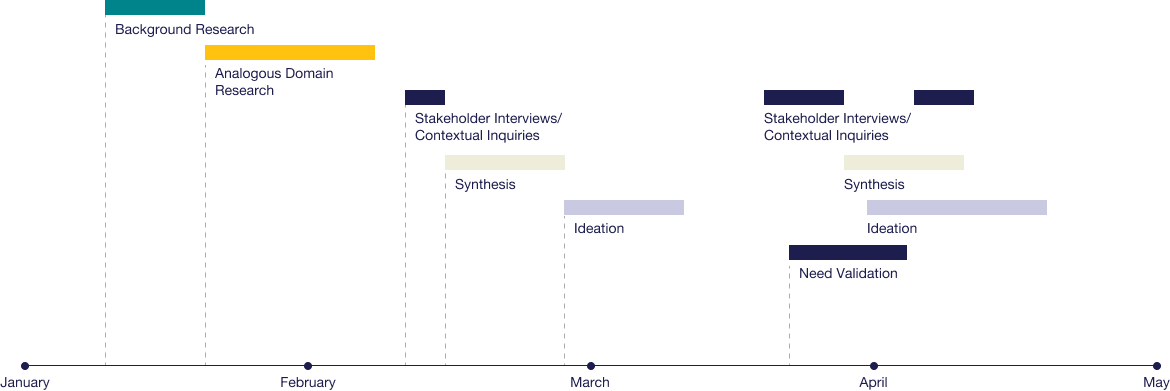
Starting off, our team knew close to nothing about either space or systems engineering, we started with a list of questions to answer through background research, including the mission of Space Launch System (SLS), functional analysis and graph databases.in functional analysis.
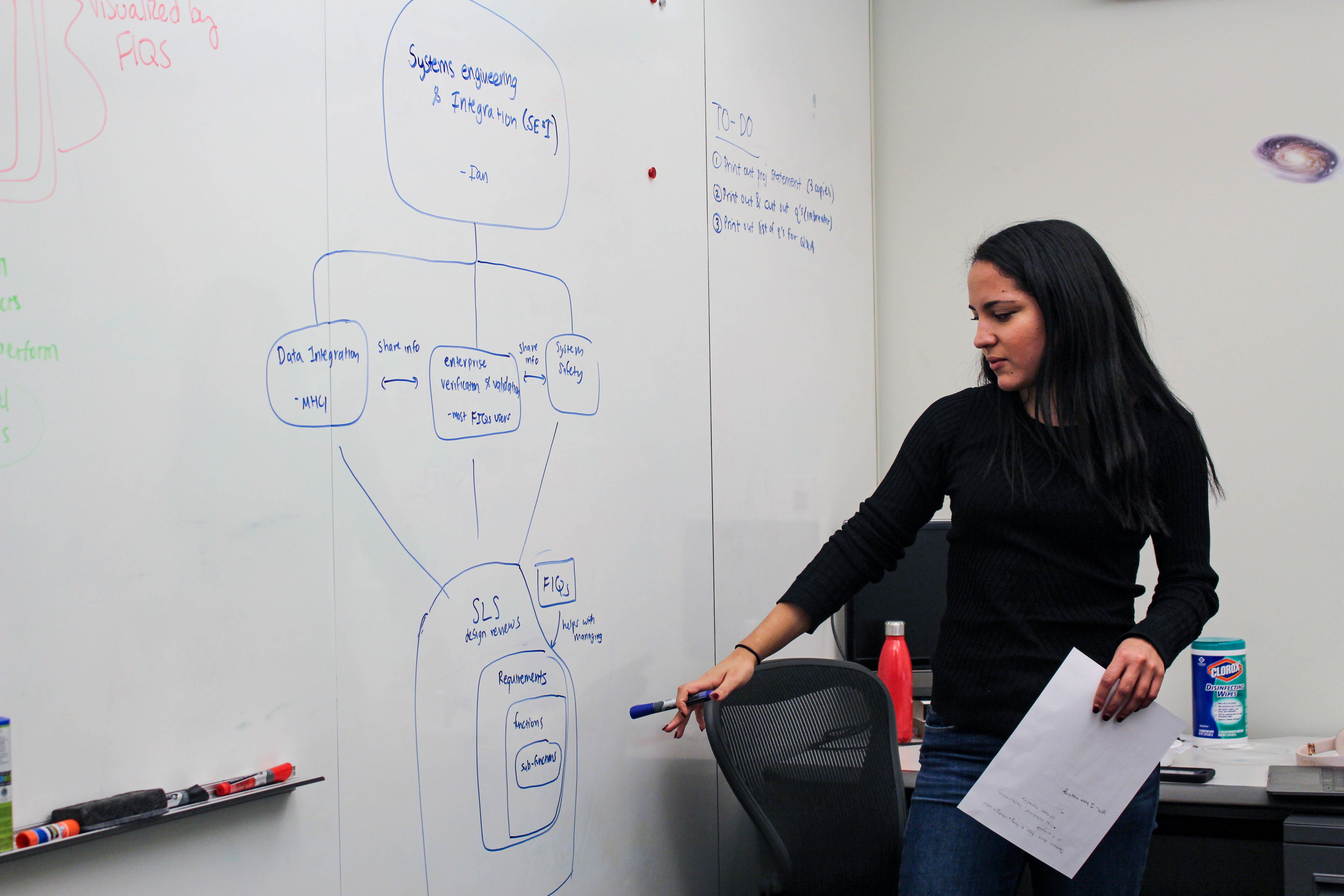
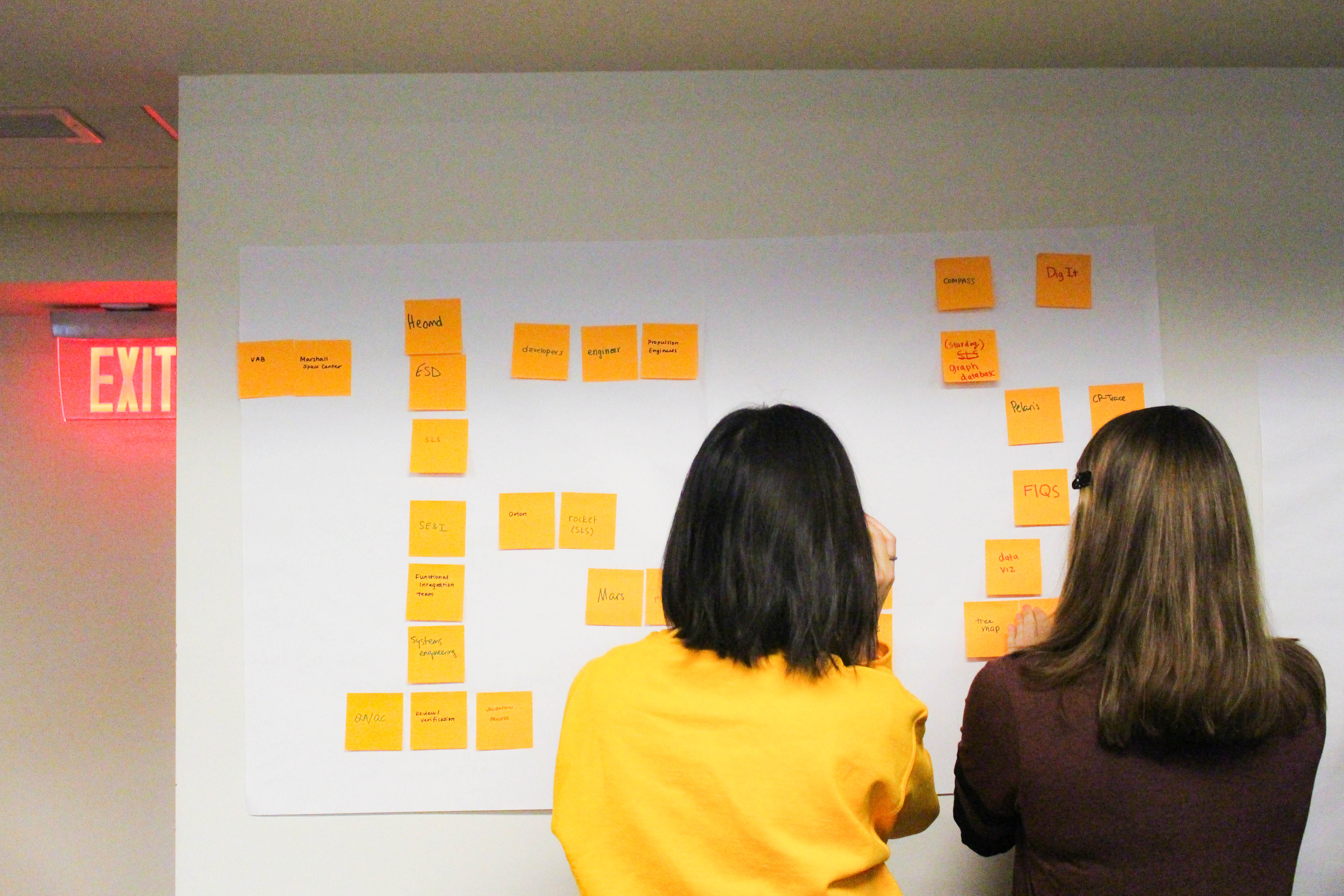
After developing a general understanding of the problem space, we were able to identify domains that share a similar context and work flow with NASA systems engineers. We focused on fields where multiple teams collaborate to work against a wide variety of requirements in complex systems over time. We conducted 8 interviews with people whose roles ranged from NASA systems engineer to manufacturing engineers:
Architects, civil engineers and construction workers come in at different phases of bringing a building to life. These projects timelines often span multiple years and involves many stakeholders.
Manufacturing relies on an understanding of how different parts fit together and requires heavy cross-team collaboration to deliver a well-integrated product.
Systems engineers working on other NASA projects shares the general NASA context, and are also responsible for integrating different subsystems.

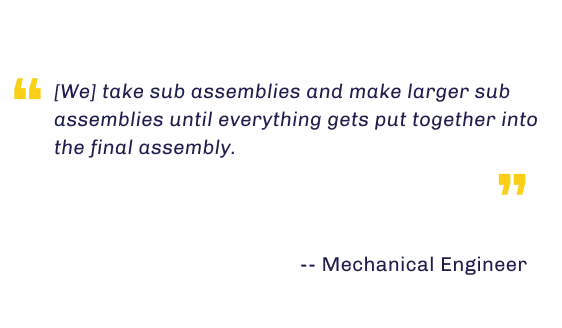
To better understand our findings, we created journey maps to represent the processes, with a focus on their relationship to dependencies, collaboration, schedules as well as their pain points.

With the domain context and insights we gathered from analogous domain research, we were able to start preparing for our contextual interviews onsite.
We visited the Marshall Space Flight Center in Huntsville, Alabama and conducted semi-structured interviews and contextual inquiries with the SLS engineers. We talked to both systems engineers (who focus on the integration and the interrelationship of different parts/disciplines) and engineers who are responsible for designing specific parts. These interviews revealed contrasting perspectives.
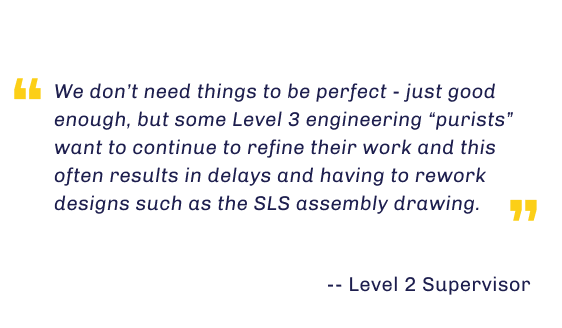
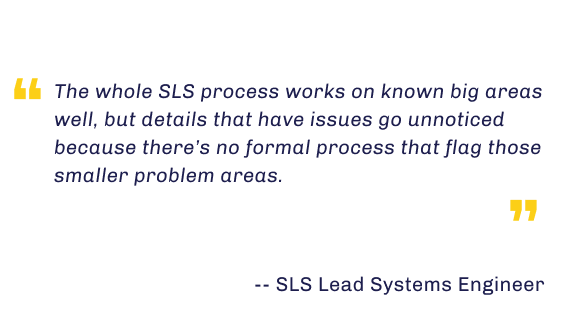
We sythesized our research by building sequence models (which helped us understand engineers' work processes and identify our knowledge gap) and an affinity diagram (which allowed us to uncover themes by grouping the data).
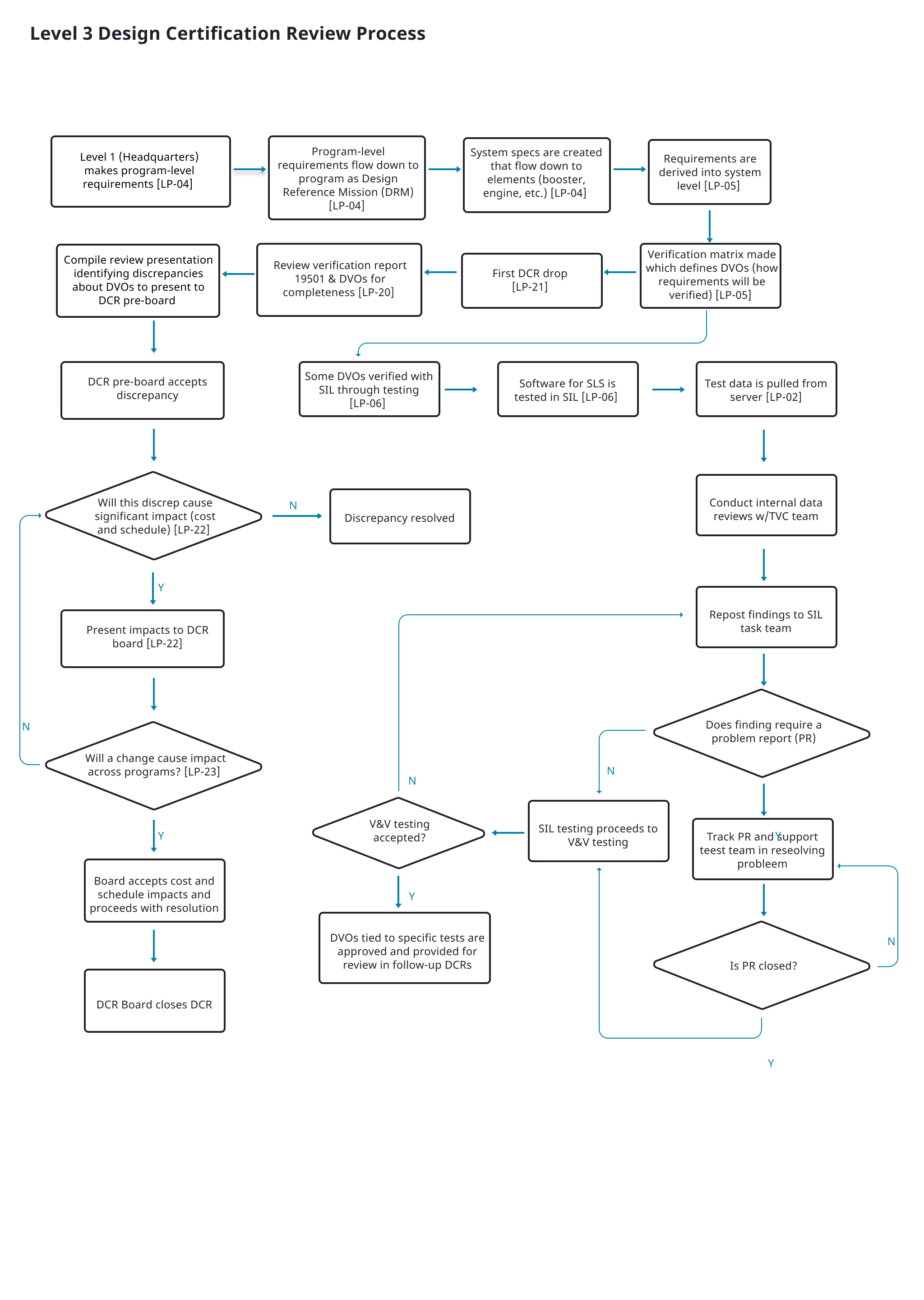
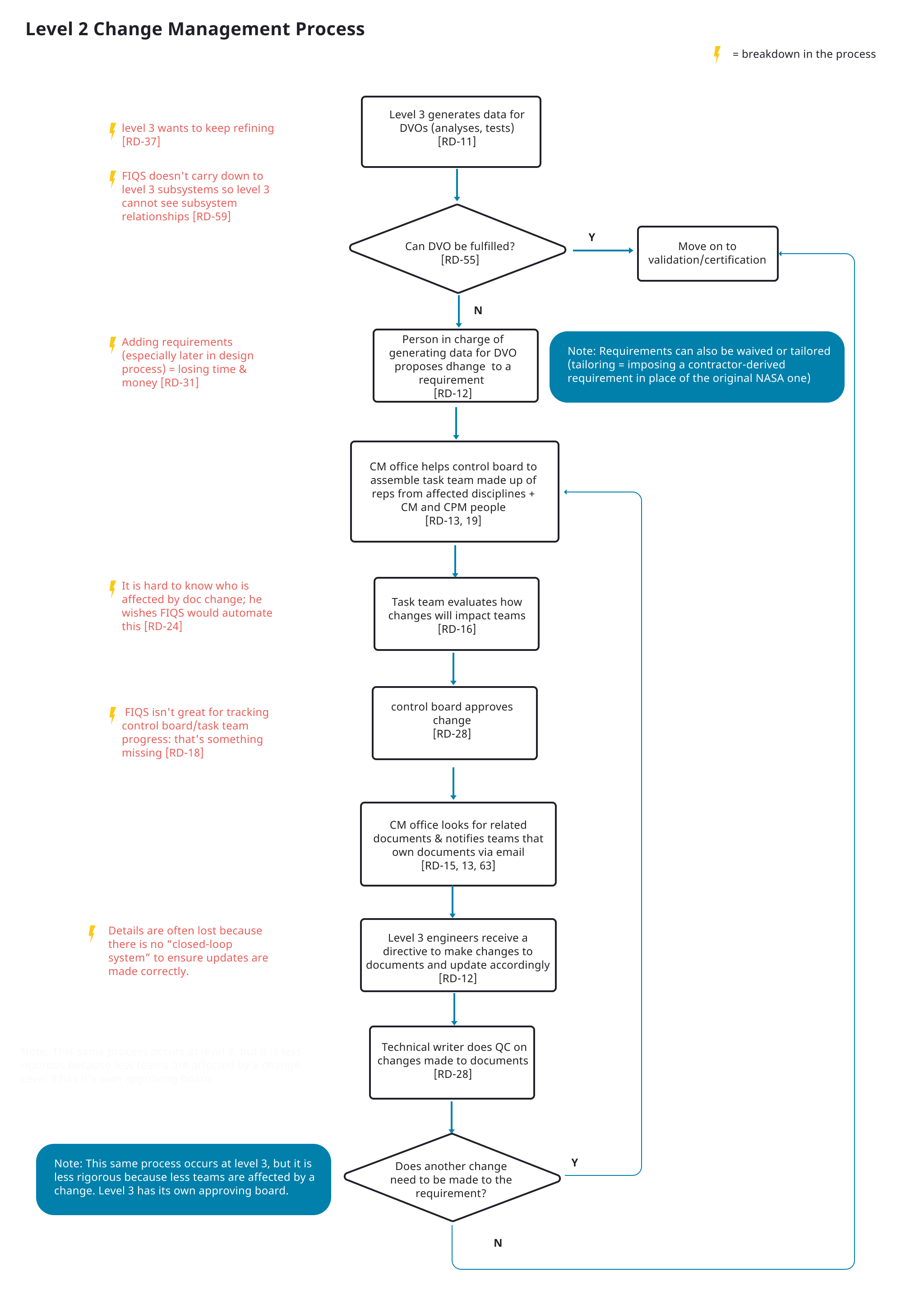
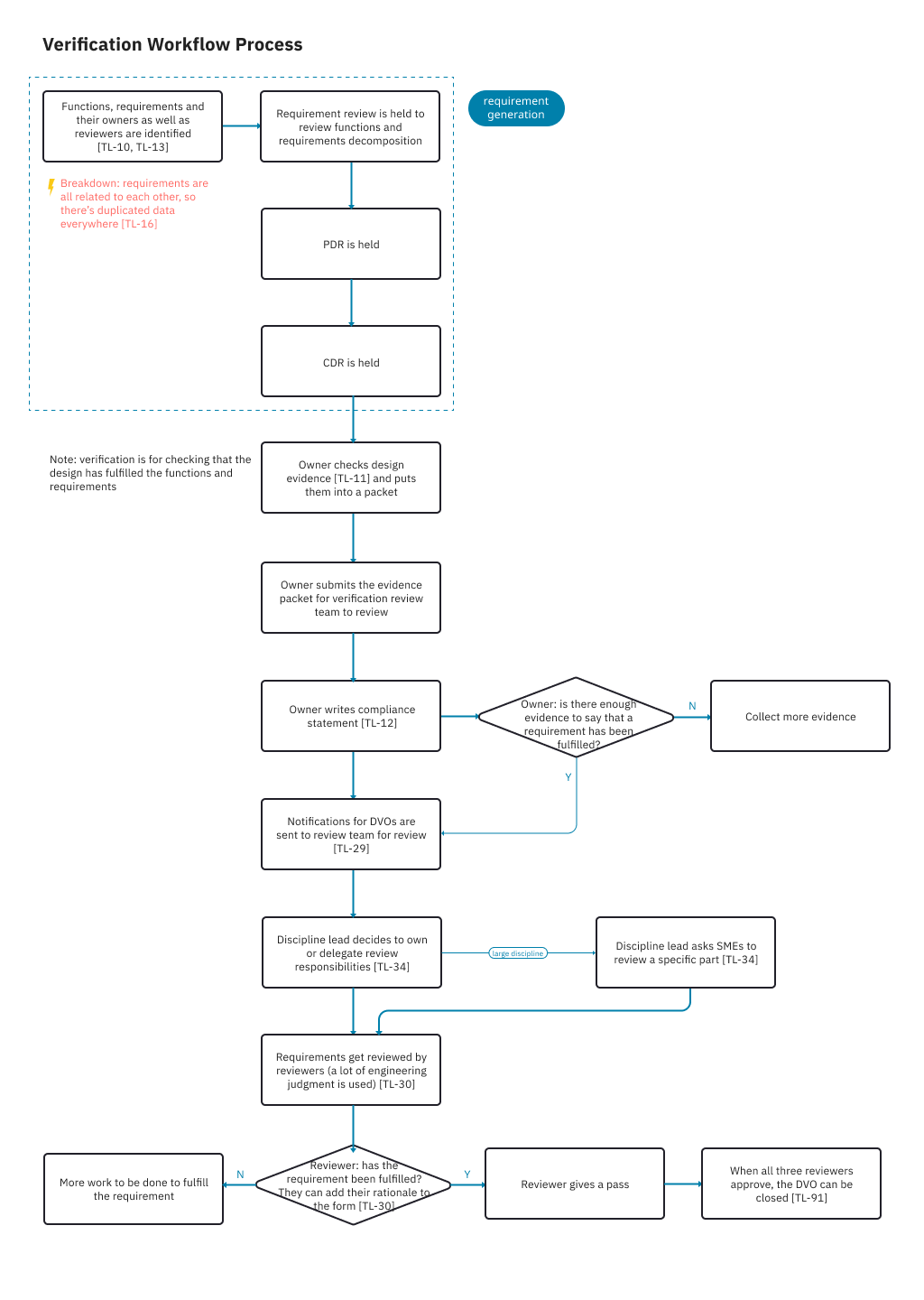
Here is the affinity diagram we created from our 10 interviews/contextual inquiries.

As we furthered our research, we realized our problem scope and likely solution were more about how multiple stakeholders interact with a requirement, as opposed to individual processes. To identify potential opportunities for our solution to come in, we created a “journey map” for a requirement.
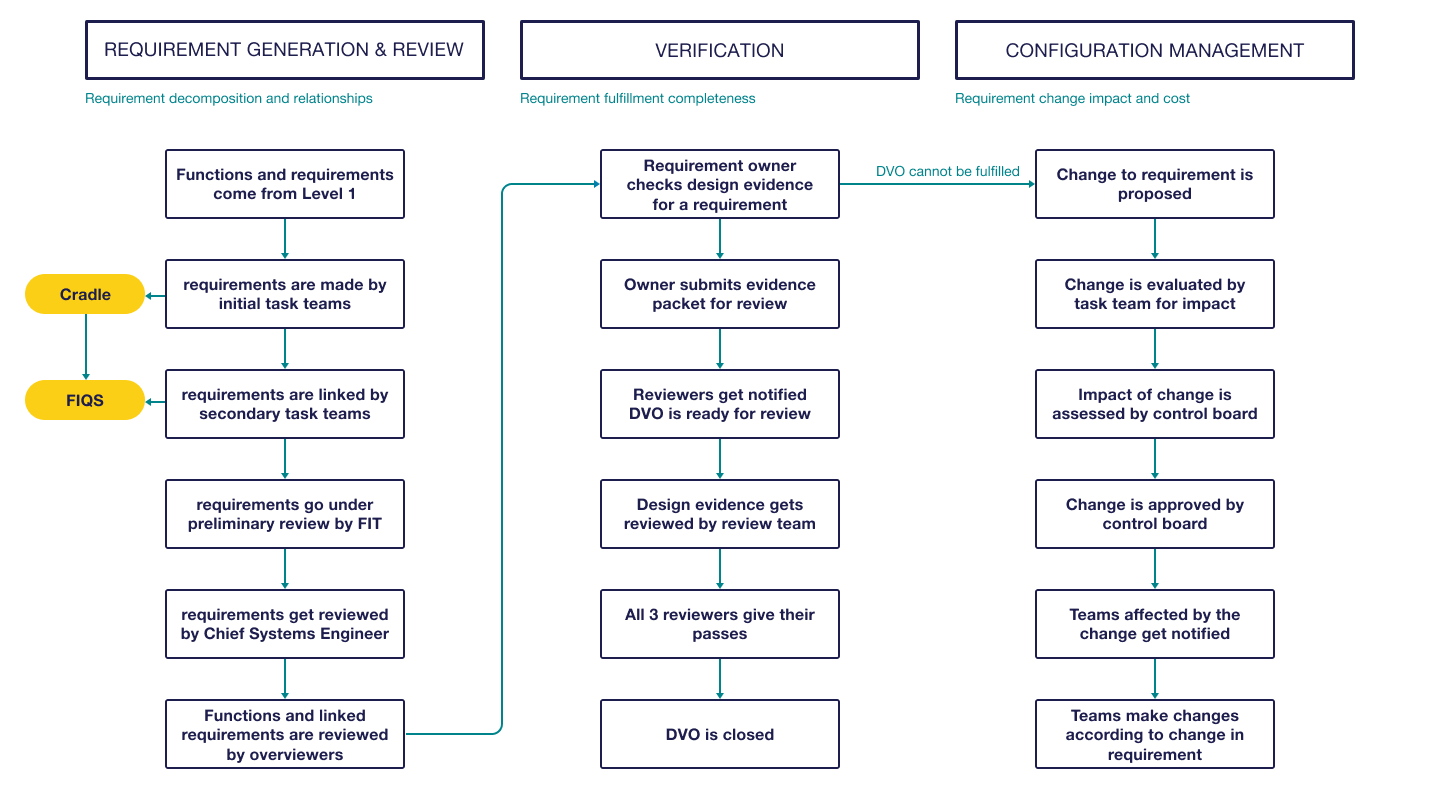
Every member of our team independently reviewed all of the research work we had conducted thus far, coming up with unmet needs and design opportunities. Synthesizing these identifications, we came up with the following guiding questions.
We used different rapid ideation methods, including Reverse Assumptions, 20 Questions, and Crazy 4's, to generate over 100 different possible solutions for our initially discovered needs.
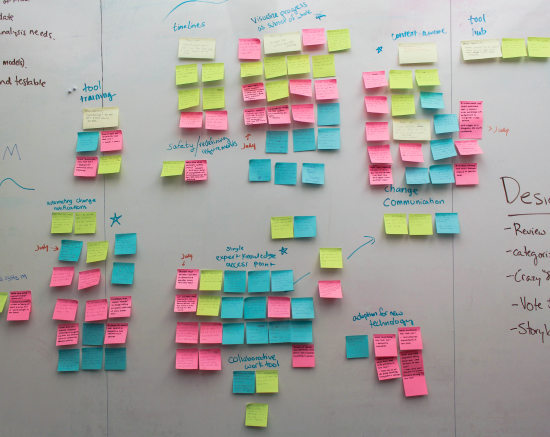
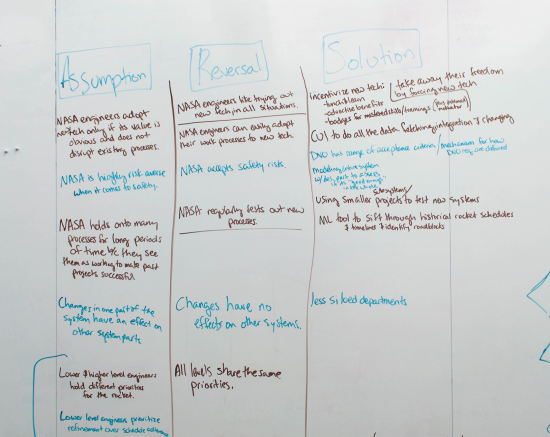
We affinitized these ideas to identify overarching categories and then narrowed to the top 4 that were the most interesting and impactful to out problem space:
The identification of these problem areas marked the end of our generative research phase and the start of evaluative research that would allow us to validate these needs.